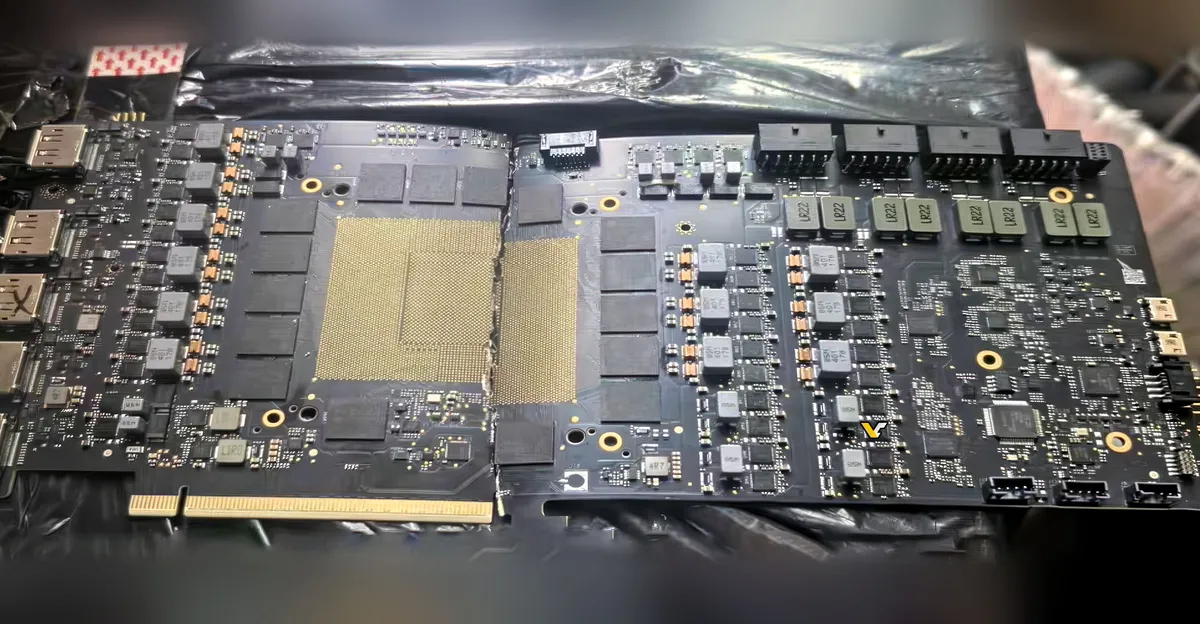
NVIDIA has recently unveiled an intriguing RTX 5090 design that features four power connectors, offering a glimpse into what could be one of the first engineering boards developed for this upcoming graphics card. It is essential to note that this is a prototype, and as such, it showcases various components that are not intended for a retail product.
The engineering board prominently displays a multitude of USB, pin, and connector headers, indicating its preproduction status. This prototype may have been utilized for software prototyping or could be one of the initial RTX 5090 units distributed to board partners. Typically, such early-stage cards are meant to be discarded and destroyed; however, this particular unit has been dismantled, leaving it irreparable. It's worth mentioning that Printed Circuit Boards (PCBs) are multilayered, and even minor damage can result in extensive repair time.
The RTX 5090 prototype showcases an unconventional design, particularly evident in its doubled VRM sections located on the right side of the card. Unlike many of its predecessors, this model is equipped with four power connectors, all utilizing the modern 16-pin type. This configuration has the potential to deliver up to 2400W of power, provided that the VRM section is capable of managing such an output.
While we are unable to observe the reverse side of the card, it is plausible that this unit represents either an RTX 5090 or a PRO Blackwell GPU prototype. Based on available images, the card is equipped with as many as five display connectors, a feature that is quite unusual but likely serves a specific purpose during testing phases.
It wouldn't be entirely surprising if further leaks confirmed that NVIDIA is also developing a TITAN Blackwell prototype. Historically, the TITAN Ada was confirmed over two years after the architecture was first launched, suggesting that NVIDIA may be taking a similar approach with future products. However, considering the considerable gap between the RTX 5090 and the PRO 6000 series, the rationale for such a GPU may be questionable.
In conclusion, the revelations surrounding the NVIDIA RTX 5090 design provide an exciting preview into the future of graphics technology. As the industry eagerly awaits more information, this prototype serves as a testament to NVIDIA's ongoing innovation and commitment to pushing the boundaries of GPU performance.